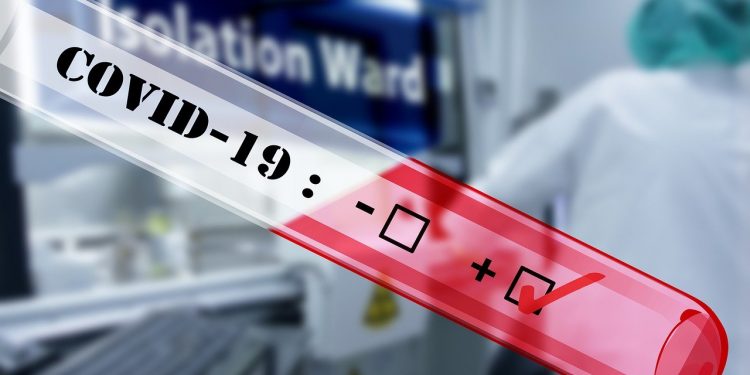Coronavirus status in Denmark at 20 April: More testing as society opens
Message at today’s press meeting: “If you have any kind of coronavirus symptoms, you can get tested.”
The article continues below.
By Bente D. Knudsen
Danish media has reported repeatedly during the past weekend about mysterious white tents being set up at different locations in Denmark, notably in Fælledparken, the park next to Rigshospitalet in Copenhagen. Today the Danish health minister offered more insights as to their future use.
“We are currently establishing five new test centres around the country and more will be added to those five in the coming weeks and months. They will be part of our test strategy, the first five are already taking part in pilot project to get them up and running. We hope to present our “opening of the society” test strategy and the updated guidelines shortly,” Magnus Heunicke said.
At the same time, he launched a broader appeal to the Danish citizens: “Use you GP, if you have symptoms of any kind, make sure to call your GP and if you have any symptoms that resemble the coronavirus ones such as a dry cough, fever or shortness of breath, your GP can evaluate, if you should be tested for COVID-19.”
The article continues below.
The current status of the epidemic is that Denmark is in its eight week of the outbreak of COVID-19. At present 96,244 citizens have been tested, 7,515 have tested positive and 4,312 have recovered from their illness, 364 have died.
Status of the pressure om the health system is that it is low with 336 in hospital, of which 84 are in intensive care, of them 72 need help from a ventilator.
The Danish society is slowly opening again, last week with the childcare facilities and schools for the grades 0 to five and today several small businesses have been able to reopen after having been shut four weeks ago.
The Danish Health Minister said at the press meeting that part of the opening strategy will also mean testing much more widely in order to make sure that the epidemic can be kept under control.
Therefore the famous white tents will be put in use in order to make sure that many more people can be tested, for instance if someone needs to visit a relative in an old people’s home, that person needs to be sure they do not bring the virus with them, this means that testing will also be possible of anyone with very light symptoms.
The article continues below.
Testing for antibodies is also part of the opening strategy and how this will be organised is still to be announced. The antibody testing will be important to find out how many have had the virus even those who only had very light symptoms and are not aware that they have been infected with it.
“It will also be possible to find out if people can become infected again or how their immunity has developed, this we would be able to find out very quickly,” Kaare Mølbak said at the press meeting.
The article continues below.
Support our magazine with a contribution of any size
We do not want to put up a pay-wall, so we need your support and if you find our content relevant and worthwhile, we would value any contribution, however big or small, as a token of your appreciation of our efforts.
How to support:
Transfer any contribution to our bank account at: Your Danish Life/ Danish Expat Media Aps
Danske Bank Account number: 3409 11405673
IBAN: DK68 3000 0011 4056 73
or MobilePay to 2144 1224
Message: Support
Questioned as to why some tests are negative when a person is later diagnosed with coronavirus, the Director of the Danish Health Board explained how testing is done in order to explain why some tests are falsely negative:
“The test is made by taking samples through the mouth or nose of a person’s secretion/ mucus in order to find the virus’s RNA gen in the material, this is what the testing equipment in the laboratories does. A positive test is rarely false, however, a negative test can be false for various reasons; if the test was not done properly by an experienced person in the sense that not enough material was pulled out, or the virus was further down in the lungs (so again not being able to get the right secretion material to test), or the person is not yet ill enough for symptoms to be present and they will only come a couple of days later.
This is the challenge with testing. Approximately five to ten percent of the COVID-19 tests are false negative. Therefore, it is important that the GP also looks at any other symptoms which could be the virus.”
More massive possibilities of being tested for antibodies is still being prepared and according to Kåre Mølbak from the Danish infectious disease institute, SSI, the antibody testing method preferred in Denmark will be by taking blood samples with a needle and this takes some time to set-up in a large scale.
It was supposed at the press meeting that the famous white tents could also be for antibody testing, but the authorities did not bring further clarification at this point.


